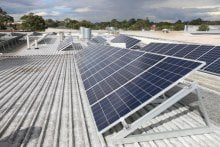The Government’s National Energy Guarantee (NEG) has raised more questions than it has answered, with electricity futures rising by a national average of 2.5% up to the year 2020 since it was announced.
The Government came up with the NEG after it decided to ditch Chief Government scientist Alan Finkel’s Clean Energy Target. The government has also moved away from renewables and has announced that subsidies on solar will be removed after the current Renewable Energy Target expires in 2020. The government argues that falling prices mean that the renewables sector should be able to stand on its own two feet by 2020.
This means that there are only two years of subsidies available, prompting a spike in demand for solar.
The NEG is supposed to save residential customers $115 on their bill per year, but those workings are on current prices and if futures prices do not come down, it is doubtful that these savings can actually be made. No calculations have been made for businesses, leaving them in the dark.
Key points
Futures prices up by average of 2.5% since NEG announcement
Subsidies on solar to go in 2020
No short-term measures announced
$115 household bill savings worked out on current energy prices
Futures prices 2018-2020 up by average of 2.5% since NEG was announced

The government unveiled its grand National Electricity Guarantee plan on October 16, pledging $115 less would be paid on every household bill after 2020. Has the policy announcement calmed the markets and given them the stability that energy generators crave?
The short and simple answer is: No. Futures prices from the date when the NEG was announced up till November 7 have shown an increase in all states under review for 2018, 2019 and 2020.
The average increase across Australia was of 2.5%. The highest average increase to date was registered in Victoria with 4.5% followed by New South Wales with an average increase of 2.9%, Queensland with an increase of 1.1% and South Australia with an average increase of 1.4%.
No short to medium term measures
The NEG will come into effect in 2020, once the Renewable Energy Target runs out. This means that for the next two years and three months, nothing is being done to address the current energy price spike.
Energy bills continue to increase and the government has also not outlined what it is going to do to alleviate the financial pain that businesses a will experience for the next two years until the policy kicks in.
The time to invest in solar is now

The one thing that is clear after the NEG announcement is that the time to invest in behind the meter solar generation is now.
Under the NEG, there are two years left before subsidies on renewable energy sources will be scrapped, which means that prices for installations will increase as from 2020. The government’s reasoning is that the market would be able to “stand on its own two feet” by 2020 and to “ensure a level playing field”.
Commentators and experts have said that having some form of policy is better than having no policy at all, but experts also said that the NEG is shoddy and lacking in details of how it is going to work.
Behind the meter solar will be affected by National Energy Guarantee
The impact of the NEG on the renewables sector is hard to predict, but it is not looking very positive. Modelling for the government suggests that the share of renewables in total generation will be 28-36 percent by 2030 – and the level of wind and solar 18-24 percent.
This compares to a level of 42 percent suggested by Finkel in the CET, Labor’s 50 percent target, and the 70 percent deemed necessary if Australia wants to meet the international 2°C global warming target.
This new modelling represents only a modest increase in renewables, and possibly a virtual stop. While it will clearly impact on behind the meter solar, it could likely bring new large-scale development of wind and solar to a halt.
Solar in NSW saved between $2.3 and $3.3 bn in one year

A study by Energy Synapse, commissioned by the community lobby group Solar Citizens, highlighted broad benefits of the more than 6GW of behind the meter solar installed on more than 1.7 million household and business rooftops.
The study notes that in NSW alone the savings from rooftop solar – by reducing demand at crucial times and challenging the dominance of the big generators in the wholesale market – were between $2.3 billion and $3.3 billion in the 12 months to April, 2017.
Even though behind the meter solar only provides 2 percent of total generation, the study found it clipped prices by $29-44/MWh – up to 50 percent higher than the actual price.
Major generators have long complained about how behind the meter rooftop solar is “clipping their margins”, and networks have also underscored the other major finding of the Energy Synapse study by pointing out that rooftop solar is narrowing and lowering the periods of peak demand.
A price on carbon?

Some experts say that the NEG will effectively put a price on carbon.Others have gone further in saying that the country is replacing the Clean Energy Target with a Dirty Energy Target that favours coal operators and the energy oligarchy. This may make it impossible for Australia to meet its Paris Climate Accord obligations, and put upward pressure on prices through reduced competition.
Experts have also said that they could not understand the workings of how businesses will save $115 per year from 2020-2030. Some have calculated that the best case scenario is a saving of $25 per year, not accounting for inflation and also not accounting for what prices will be in the future.













